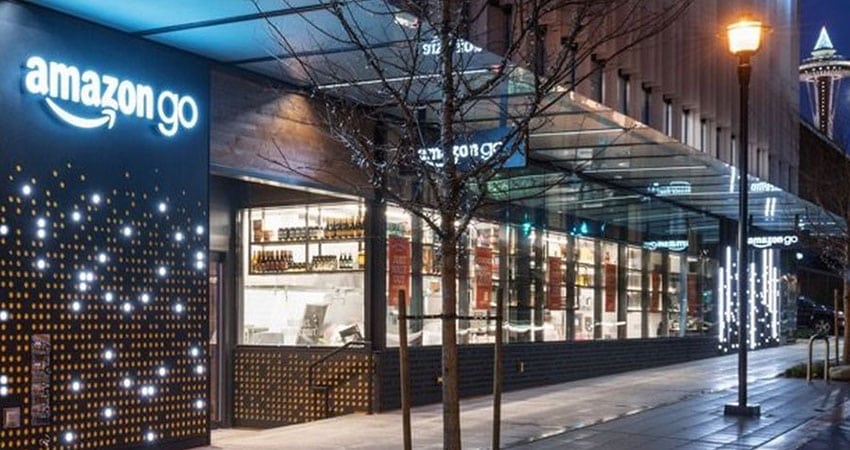Amazon has launched its first Amazon Go store, on the ground floor of a building in its sprawling Seattle headquarters. Shoppers simply walk out of the store after scanners add up the purchases, send them to an app and have it deducted from their bank account.
So you can add convenience store chains like 7-11, GetGo and Cumberland Farms to the list of sectors in Amazon’s crosshairs. However, with more than 150,000 quickie marts coast-to-coast, a market share grab won’t happen overnight. Reports vary as to how quickly Amazon plans to ramp up the checkout-less stores.
The 1,800-square-foot flagship Amazon Go store was initially supposed to open to the public a year ago, but was likely hung up by various technical snafus (sensors and cameras are everywhere) while being tested internally by Amazon employees since December 2016. The company estimates Amazon Go will shave about 50 seconds off the typical convenience store trip. The fare is targeted more at upscale, health-conscious consumers than junk food buyers.
Unlike many convenience stores, there is no coffee – at least for now – and no gasoline at Amazon Go. Entrance is gained by scanning a QR code from the app at a turnstile.
Despite the lack of cashiers, there are still about 10 employees at Amazon Go, including chefs, helpful associates and ID monitors at the liquor corner. Thus, headcount elimination isn’t necessarily the focus, so service workers need not fret. As with all things Amazon, it’s more about convenience and speed.
Tushar Patel, CMO of Kibo, said Amazon Go is yet another push by the ecommerce giant to up the ante in removing friction and marrying digital and physical. According to research from Kibo, 94% of consumers expect online and in store to be a single connected experience.
“While other retailers may not be ready to offer their consumers a checkout-free experience at this time, savvy retailers can effectively compete against (Amazon Go) by continuing to connect their digital and physical components,” Patel said. “They can create opportunities for multiple fulfillment offers such as BOPIS as well as mobile coupons while customers are shopping in store.”
In its Future of Retail report, Walker Sands found 60% of consumers are likely shop at Amazon Go, indicating a possible national expansion of Go could be successful. Another study from Feedvisor found nearly 60% of Prime users would consider purchasing groceries through Amazon because of its acquisition of Whole Foods.
“The launch of Amazon Go represents how quickly companies are moving to find innovative ways to engage with today’s evolving customers,” said Dan Neiweem, co-founder and principal at Avionos. “With this re-imagined grocery store Amazon is using its test-and-learn philosophy to gauge how open customers are to this concept so they can refine the service based on shopper feedback and preferences.”

